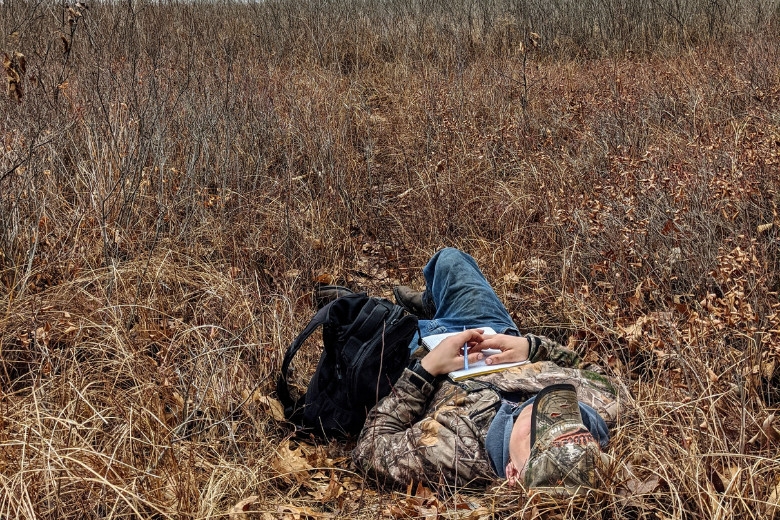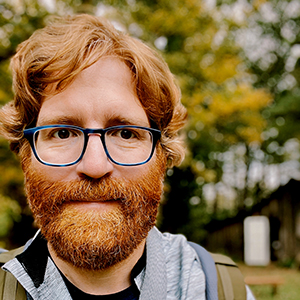
As I write, in April 2020, the whole world is living through uncertain, disheartening times. The COVID-19 pandemic has schools shutdown indefinitely in my home state of Wisconsin, and through the end of the school year in many others. Many businesses are closed, and the majority of the United States is living under “Safer at Home” orders that restrict our travel. In short, all of our routines and normal patterns of behavior are broken, and it’s unclear when they will be put back together, or how the pieces will fit when they finally are.
As a classroom teacher, I miss greeting my students each morning with a smile and a simple check-in. I miss circling up to talk about our day and how we’re all doing. I miss teaching math mini-lessons and talking students through challenging twists in their projects. I even miss helping them with their interpersonal drama as they learn through experience how to be both independent and interdependent. But most of all, I miss taking them outside to explore and learn about the spaces around them.
With all of that said, the good news is that right now is the perfect time to get outside, learn about nature, and find some new patterns to fill in for the old ones. It’s the perfect time for students and adults alike to start investigating their local phenology.
Describing Nature
Simply put, phenology is the study of seasonal changes (“pheno-,” as in “phenomenon” or “occurrence,” and “-ology,” as in “the study of”). Though the term is relatively modern, humans have likely been studying seasonal changes for as long as we’ve been able to think. When you’re subsisting on wild game and basic agriculture, it pays to know what the changing seasons portend. At my school, each student picks a spot on campus in September that they return to observe on a monthly basis throughout the school year, asking themselves questions like: “What do you notice? What do you wonder? What has changed?”
At home, the easiest way to get started with phenology is to simply begin paying attention to what’s happening outside your window. Pick a tree or other plant that’s in an easy-to-observe spot and note what’s happening with it each day. It doesn’t matter how small or large your spot is, as long as you are able to observe it consistently. And you don’t need a pristine forest, either—street trees make great observation subjects! Write a bit about what you see, hear, smell, and feel. Sketch a picture or snap a photo. Notice the changes taking place from one day to the next. Identify the species you are observing using any number of online guides (or a paper field guide, if you’re lucky enough to have one).
In slowing down and closely observing these seasonal changes, you will be following in the footsteps of ecologist and writer Aldo Leopold, whose A Sand County Almanac is organized around a year of observations and interpretations of the natural world at his family’s Shack.
Counting Nature
Aldo’s daughter, Nina Leopold Bradley, continued his phenological observations at the family property until her death in 2011. In 1999, she and her husband used this data set to show that even then climate change was causing observable shifts in the seasonal behaviors of plants and animals. Today, if you are interested in taking your phenological observations a step further, you can also contribute to scientific research through several community science projects. I have used the following with students:
- eBird is perhaps the best known and simplest of these projects. Run by the venerable Cornell Lab of Ornithology, eBird allows you to record birding observations through mobile apps and a web interface. The data collected in eBird is used in a wide variety of research, and their Merlin Bird ID app will make you feel like an expert in no time.
- iNaturalist is sort of like eBird but with the scope widened to all life on earth. Fungi, trees, mammals, birds—it’s all there. When you upload a photo to iNaturalist, it will try to help you identify the species you’ve observed. But iNaturalist’s superpower is its global community of amateur observers and professional scientists who help confirm or fix those identifications. (iNaturalist also makes a very cool mobile app called Seek that uses machine learning to automatically identify living things you point your phone camera at.)
- Finally, Nature’s Notebook from the USA National Phenology Network takes a more systematic, quantitative approach to the collection of phenological data. There is more setup required to get started with Nature’s Notebook, including a bit of online training, and the apps aren’t as polished or exciting as the ones listed above. However, if you can get past those hurdles, the data you collect can contribute to a wide variety of research projects. I can also confirm that the data collection gets much easier with practice!
Sharing Nature
What I find most exciting about these activities is that they require little more than the ability to observe nature, but they can connect us to vibrant communities of nature enthusiasts even when we are living secluded in our homes. The Twitter account Phenology News and #phenology hashtag are great places to share your observations and learn about the natural changes happening in other parts of the world, or just right around the corner.
In a time of global uncertainty, I find hope and stability in the continuing cycles of nature. The songs of robins and red-winged blackbirds, the green shoots poking through the dirt, and certainly the later sunsets all help me to remember that this, too, shall pass, and that at some point I will be back in the classroom with my students. In the meantime, I will continue to teach them online as best I can and watch for phenological changes on my walks. I hope this guide helps you find a similar sense of peace and wonder about our incredible world.
Skylar Primm, Guest Writer
High Marq Environmental Charter School
Skylar L. Primm teaches at High Marq Environmental Charter School, a project-based learning school in Montello, Wisconsin. In 2017, he was the recipient of a Herb Kohl Educational Foundation Fellowship in recognition of his teaching, leadership, and service. He currently serves on the boards of directors for the Human Restoration Project and the Wisconsin Association for Environmental Education. He blogs at medium.com/@skylarp, usually for the Greater Madison Writing Project. You may contact Skylar by email.
Disclosure: Please note that we may use affiliate links to retailers which yield a commission for us at no extra cost to you. We only recommend products we've used that support our mission. As an Amazon Associate FIELD Edventures earns from qualifying purchases. Your purchases support taking learning outdoors.

